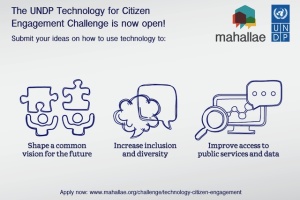![]() UNICEF is inviting technology organizations developing tech solutions with the potential to improve the lives of the world’s most vulnerable children to apply for funding from its recently launched Innovation Fund.
UNICEF is inviting technology organizations developing tech solutions with the potential to improve the lives of the world’s most vulnerable children to apply for funding from its recently launched Innovation Fund.
UNICEF Innovation Fund plans to invest in open source technologies by increasing children’s access to information, opportunity and choice. UNICEF identifies opportunities from countries around the world including some that may not see a lot of capital investment in technology start-ups. They are hoping to identify communities of problem-solvers and help them develop simple solutions to some of the most pressing problems facing children.
The fund focuses its investments on three portfolio areas:
- Products for youth under 25 to address a range of needs including learning and youth participation;
- Real-time information for decision-making; and
- Infrastructure to increase access to services and information, including connectivity, power, finance, sensors and transport.
The projects must be open source and have a working prototype. They can involve developing a new technology, or expanding or improve upon a preexisting technology.
Key Dates
- 1 February 2016: Launch of global Requests for Expressions of Interest
- 26 February 2016: Closing date of the Requests for Expressions of Interest
- Early-March 2016: Selected companies and institutions will be contacted and will receive a Request for Proposal
- Mid-March 2016: Virtual or in-person pre-tender briefings with selected companies and institutions will be held
- End-March 2016: Full technical and financial proposals are due from selected companies and institutions
- Early-April: Contracts will be awarded to selected companies and institutions
More information about the challenge and how to submit an idea.
For more information about UNICEF’s work in innovation, visit: www.unicef.org/innovation and www.unicefstories.org
Follow on Twitter: @UNICEFinnovate
Also see this TechSoup thread about UNICEF’s Wearables for Good Challenge


